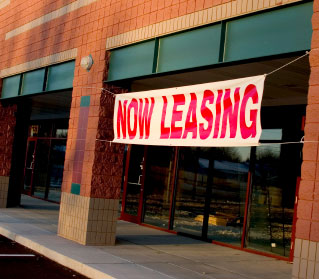Commercial Leasing
We fulfill all your leasing requirements- whether you are looking for a premises for yourself or need assistance in leasing out your own commercial space. We are No.1 Commercial Leasing
Our well-experienced team will. We have many commercial options, which can be made to suit your requirement by our team. We also have many plug-n- play options to offer in certain areas which have been done up well keeping standard smart- office layouts in mind.
We have a dedicated team to look into your requirement and help you find the perfect premises for your complete office, institutional or industrial setup- furnished or raw in the region. One of the main strengths is the in-depth knowledge of properties in the area, their history and the interaction with the people involved in them for a long period of time. We have a vast database of commercial furnished/ unfurnished options with us to cater to almost every need of our clients
A good lease for your business premises is vital and could mean the difference between success and failure.

What is a lease?
A lease is a legally binding contract, so while leases may be complex and difficult to comprehend, it’s essential that you fully understand the terms and conditions before making a commitment.
It’s also important that you understand your rights and obligations in relation to the lease in order to deal with any disputes that may arise, and to know who to contact for help.
Legal and commercial advice should be obtained before:
- Making any commitments to buy, lease, take on an assignment or incur any other obligations;
- Signing an offer to lease or any other lease related document;
- Payment of any deposit or other monies; and
- Occupying the leased premises.
Together with legal and financial advice, you should also seek business and property advice in order to ensure the lease is based on sound business and property principles.
Nine steps involved in leasing commercial premises:
Leasing generally involves the following nine stages through which we assist you. Each of these activities can be extensive so ensure you allocate adequate time to deal with each step properly.
- Step 1: Consider your leasing needs
- Step 2: Inspect and research various premises
- Step 3: Finalize the best- suiting option
- Step 4: Obtain professional advice
- Step 5: Obtain preliminary documentation
- Step 6: Negotiate the lease
- Step 7: Fit-out of the premises
- Step 8: Preparation of final documentation
- Step 9: Register the lease in the court of law
Troubleshooting and Dispute resolution:
Disputes arise between tenants and landlords from time to time and should be resolved as cost-effectively and with as little damage to the relationship as possible. Whatever method you use to resolve the dispute, you must be logical and clear about the facts and prepare your case well. Be prepared to argue your case calmly and organize the evidence to support your position.
First, read the lease and other associated documents to clarify the rights and obligations of each party about the issue in dispute. In many cases, a well-written lease will set out what both parties have agreed, and the action required will often be obvious.
If the lease or other lease documents do not clarify the issue, then obtain business advice from us, or legal advice.
